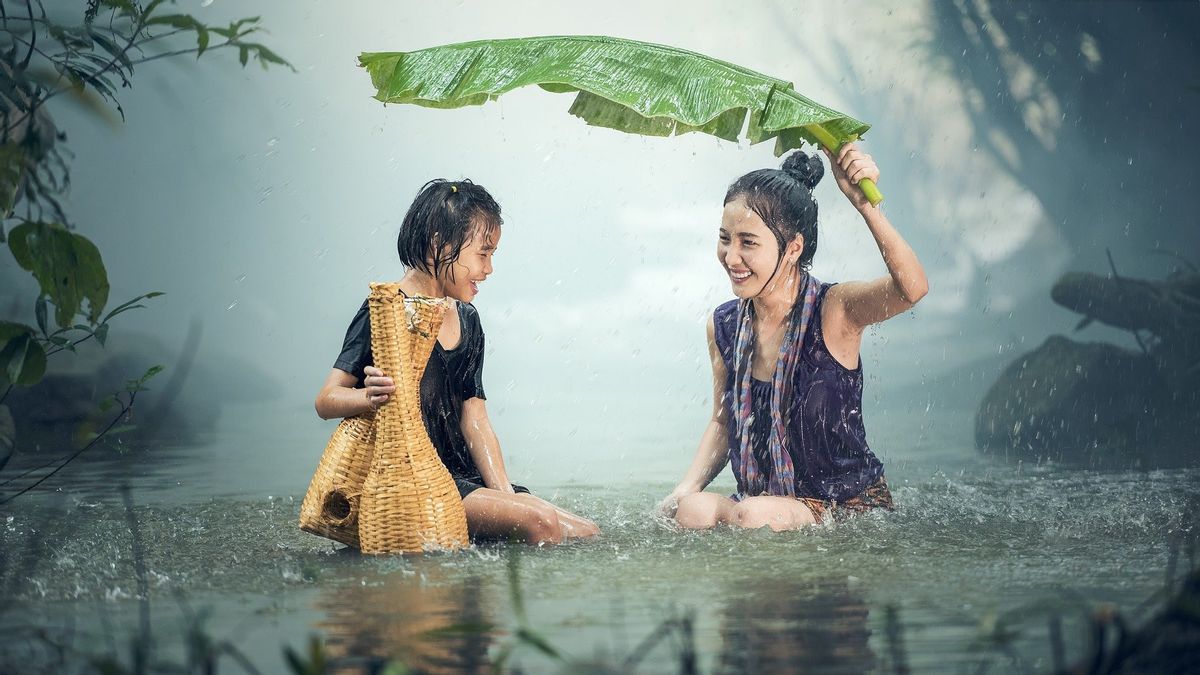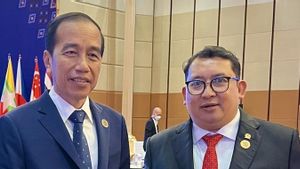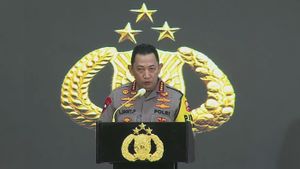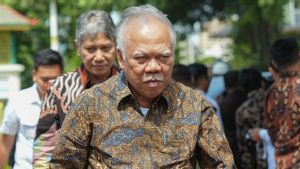JAKARTA - Water is life. In shallow minds, it is either a thirst quencher or a quencher of hydration. On a deeper level, water is a life-giver guarded through culture and tradition. In heretical minds, water is a flood. So, rain is actually an opponent that needs to be dispelled by sprinkling chemical salt.
In the archipelago, humans have lived and cultured along with water. In East Nusa Tenggara, for example. In one of the tradition of welcoming guests in Doka Village, Maumere, Sikka Regency, local residents involve water as a sacred ceremonial affair.
Right before the Molowaru welcome dance is played, those who are considered important guests by the community will be greeted in a welcoming ceremony. The guests were then asked to come to the community representatives with a traditional elder who was flanked by two women while carrying several leaves and a container for water.
The traditional elders dipped the leaves in a water container. Then, the spark is directed towards the guests at two points, one on the head which means to clear all evil thoughts, the other on the chest - which refers to the location of the heart - which means to cleanse the soul. For the people of Doka Village, water is a symbol of life. Very sacred.
Furthermore, the ceremony is carried out by draping a typical Sikka woven cloth to each guest. Music begins to play, dancers begin to move, and the guests are immersed in the euphoria of happiness in the style of a welcoming party for the Doka community.
As the traditions of our ancestors are preserved, the sacredness of the value of water will become even more grounded. Communities are culturally educated to protect their water resources from damage. Exploitation of rivers, is perhaps the most stupid thing in their heads.
The Mollo community, known as the Dawan ethnic group on the island of Timor, NTT, have also participated in the same surge. One of the interesting things about the Dawan ethnic group is the philosophy of life that they have adapted from generation to generation from their ancestors. This philosophy is closely related to the sustainability of water resources.
Environmental activist Mollo Aleta Baun explained, the philosophy shared by the members of the Dawan tribe is contained in four parts: Oel Fani On Na '(water is blood), Nasi Fani On Nafua (trees are hair), Afu Fani On Nesa (soil is meat), and Fatu Fani On Nuif (stone is bone).
The four philosophies are able to form an understanding that the Mollo people value, respect, protect and treat nature like their own bodies. Nature is an integral part of their bloodstream.
In Lebak, Banten, we know the Baduy tribe as the group that cares for water and forests the most. The harmony of their life with nature prevents them from all kinds of disasters. The good value known from the Baduy tribe is how they use natural resources sufficiently, far from exploitation.
Sustainable water in Jakarta
Jakarta was once a pretty good area to protect water. What are the options. This city lives in the middle of rivers. Most of the area names are also synonymous with water. Historian JJ Rizal in Jakarta Kota Air revealed:
Several places in Jakarta, for example, use the name swamp, including rawa belong and rawa sari. Continue to use the word a lot of times. And it should also be noted that the first and oldest civilization of the people of Jakarta was actually in the river, as evidenced by all the archaeological discoveries that indicate that all human first life was in the Ciliwung stream.
JJ Rizal added that the concept was then packaged with a variety of modern world terms. Naturalization, normalization, or absorption cities, for example. According to JJ Rizal, this proves that water is a true blessing. Life without it is a ridiculous choice.
"So he has to be taken, he has to harvest, he has to be stored, especially in Jakarta when the summer is very dry, if the rainy season is very wet."
In the past, Ciliwung was not just a river, but also a water transportation lane in which boatmen and getek builders lived. It was these craftsmen who explained the professions that lived in the past. By them the river was not only a holy space, but a space of sustenance, and everything related to the river as a high civilization was also depicted in literature in Betawi past.
Unfortunately, this thought was corrupted by the Dutch, who at that time controlled Sunda Kelapa, bringing with them the thought that water should have been discharged into the sea, or by canalizing it. "So if someone talks about the canal system it works. Remember, the Dutch failed, they failed to build the city of Batavia, and Batavia had to move and because the city resembled the city of Amsterdam with many canals, "said Rizal.
The move of the center of government from the Kota Tua area, towards the south in the 19th century, made the Dutch learn to build houses with a tropical architectural concept, by providing a large garden space. Such as the architectural concept of the Betawi people, which is so identical that the house is a small part of the architectural space which is dominant by trees and blue space.
Unfortunately, those who live in Jakarta today tend not to understand or are reluctant to learn from local wisdom in protecting the environment such as the Mollo, Doka, or Baduy people. "Things are now turning around, the house uses the river, the river is considered a giant trash can, therefore we create enmity for a long period of time," JJ Rizal.
The English, Chinese, Japanese, Arabic, and French versions are automatically generated by the AI. So there may still be inaccuracies in translating, please always see Indonesian as our main language. (system supported by DigitalSiber.id)










